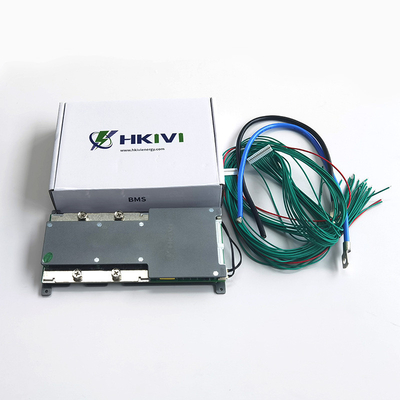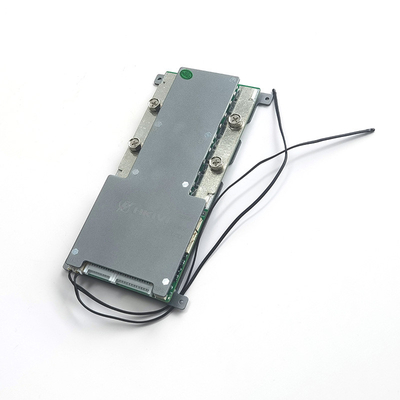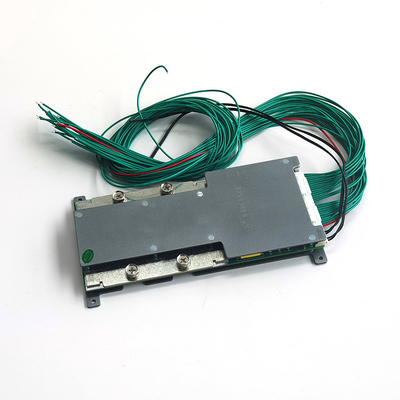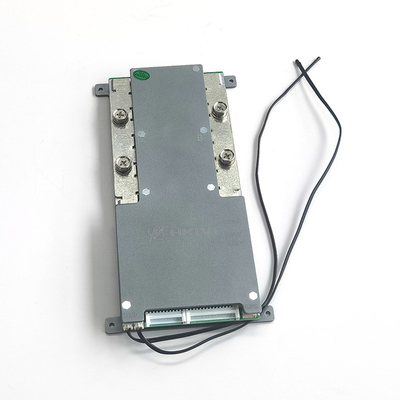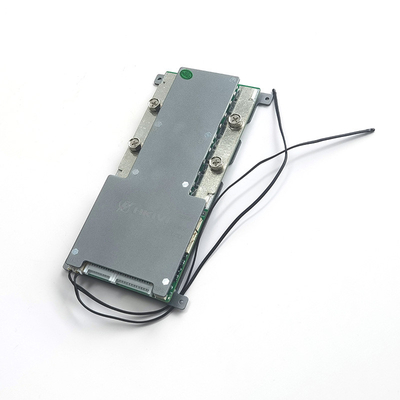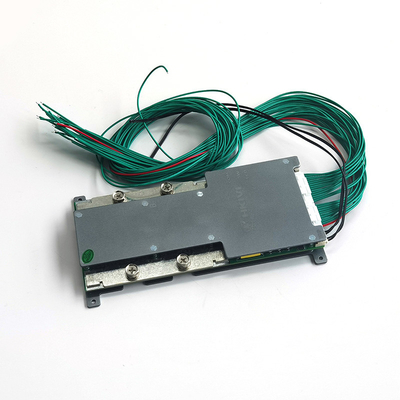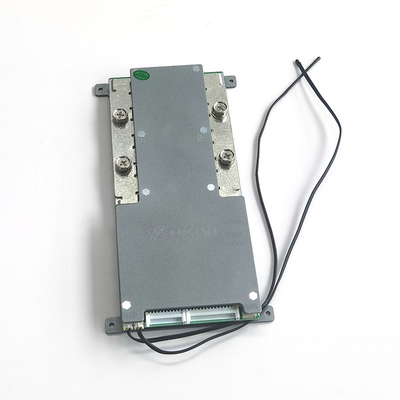-
 Ali Antonio Soto Vasquezexcelente atención
Ali Antonio Soto Vasquezexcelente atención
Bms 16s 48v 200a With Balancing Smart BMS Lifepo4 With Lcd Touch Screen
| Place of Origin | China |
|---|---|
| Brand Name | HKIVI |
| Model Number | A624S200A-250A |
| Minimum Order Quantity | Minimum order quantity: 20 sets |
| Price | Negotiable |
| Packaging Details | Single package size: 32X12X6 cm |
| Delivery Time | 7-14 work days |
| Payment Terms | L/C, D/A, D/P, T/T, Western Union, MoneyGram, PayPal |
| Supply Ability | 2000 sets/month |

Contact me for free samples and coupons.
WhatsApp:0086 18588475571
Wechat: 0086 18588475571
Skype: sales10@aixton.com
If you have any concern, we provide 24-hour online help.
x| Product Name | Smart BMS | Type | Active Passive BMS |
|---|---|---|---|
| Number Of Strings | 10~24S | Outlet Mode | Same Port |
| Discharge Current | 200-250A | Equilibrium Approach | Active & Passive 0.6A |
| Communication | RS485/RS232/CANbus/BT | Surface Finishing | HASL |
| Application | Can Be Used For Ternary Lithium, Lithium Cobalt Oxide, Lithium Manganese Oxide, Lithium Iron Battery Pack | Board Size | 190mm*105mm*15.6mm |
| Highlight | smart bms lifepo4 with lcd touch screen,with lcd touch screen bms 16s 48v 200a |
||
Bms 16s 48v 200a With Balancing Smart BMS Lifepo4 With Lcd Touch Screen
Smart BMS lithium battery protection board (HKIVI-A624S200A-250A) is a lithium battery management system designed for series lithium battery packs. It has the functions of voltage acquisition , active pressure difference equalization management , overcharge protection , over-discharge protection ,over -current protection , over-temperature protection , Bluetooth communication , capacity calculation , etc. The external interface includes RS485 communication , CAN communication , GPS remote communication , display screen etc. It can be used in scooter , small sightseeing car , tricycle ,high-power energy storage , starting power supply and other products .
![]()
| Model |
A624S250A |
A624S200A | ||||
|---|---|---|---|---|---|---|
|
Number of ternary strings |
10~22 |
10~22 | ||||
|
Number of iron lithium strings |
10~24 |
10~24 | ||||
|
Number of titanic acid strings |
15~24 |
15~24 | ||||
|
Balance method |
Active and Passive Balance(0.6A) |
|||||
| Continuous discharge current | 250A | 200A | ||||
| Maximum discharge current | 500A | 400A | ||||
| Overcurrent protection (adjustable) | 10-250A adjustable | 10-200A adjustable | ||||
| Outlet mode | same port | |||||
| Single voltage range | 1.5-5V | |||||
| Voltage Acquisition Accuracy | +3mV | |||||
| Overcharge protection voltage | 1.5~4.5V adjustable | |||||
|
Overcharge release voltage |
1.5~4.5V adjustable |
|||||
| Overcurrent protection delay | 10~120S adjustable | |||||
| Over-discharge protection voltage | 1.5~4.5V adjustable | |||||
| Over-discharge recovery voltage | 1.5~4.5V adjustable | |||||
| Number of temperature detection | 3 | |||||
| Temperature Protection | Yes | |||||
| Short circuit protection | Yes | |||||
| Coulomb counter | Yes | |||||
| Bluetooth function | support Android, Apple, HarmonyOS | |||||
| Display interface | Yes | |||||
| GPS interface | Yes | |||||
| RS485 interface | Yes | |||||
|
CAN interface |
Optional |
|||||
![]()
Before turning on the power, please confirm whether the connection of the acquisition line and other wiring is correct , whether the power provided to the protection board is within the required range, check whether the protection board has been placed safely, and the total voltage of the protection board battery does not exceed 90V . The power supply of the protection board can only be activated after confirmation , otherwise it may cause serious consequences such as abnormal operation or even burning
After confirming that the above operations are correct, you can power on the protection board . Method 1 , activate by shorting the activation connector on the protection board; Method 2, activate the charger , the charger needs to have a voltage output, and the output voltage is greater than the total voltage of the battery by more than 3 V.
![]()
A smart Battery Management System (BMS) with active balancing is an advanced system that can effectively manage and maintain the health and performance of a multi-cell battery pack. Here's a more detailed overview of a smart BMS with active balancing:
Key Components:
Cell voltage and temperature monitoring
Cell-level balancing circuits
Microcontroller or processor for data processing and control
Communication interfaces (e.g., CAN, Modbus, Ethernet)
Charging and discharging control algorithms
Active Balancing Functionality:
Continuously monitors the voltage and temperature of each individual cell in the battery pack.
Actively redistributes charge between cells using DC-DC converters or switches to maintain balance.
Adjusts the charging and discharging rates of individual cells to equalize their state of charge.
Enables faster and more efficient balancing compared to passive balancing methods.
Advanced Algorithms and Diagnostics:
Utilizes sophisticated algorithms to detect and predict cell imbalances, degradation, and potential failures.
Provides detailed diagnostics and prognostics, including state-of-charge, state-of-health, and remaining useful life estimates.
Implements adaptive balancing strategies based on the dynamic conditions of the battery pack.
Integrated Safety and Protection:
Continuously monitors the battery pack for safety-critical parameters, such as overcurrent, overvoltage, and overtemperature.
Implements protective measures, including cell bypassing, charge/discharge regulation, and emergency shutdowns.
Complies with relevant safety standards and certifications (e.g., UL, UN38.3, IEC 62133).
Communication and Integration:
Provides real-time data and status updates through various communication protocols (e.g., CAN, Modbus, Ethernet).
Enables integration with higher-level control systems, energy management systems, or cloud-based monitoring platforms.
Allows remote monitoring, configuration, and firmware updates for enhanced flexibility and lifecycle management.
Applications and Benefits:
Commonly used in electric vehicles, energy storage systems, industrial equipment, and other high-capacity battery-powered applications.
Ensures optimal battery pack performance, safety, and longevity by maintaining cell-level balance and health.
Reduces the risk of premature capacity loss, thermal runaway, and other safety-related issues.
Provides valuable data and insights for predictive maintenance, diagnostics, and system optimization.
A smart BMS with active balancing offers a comprehensive solution for efficient and reliable battery management, making it a critical component in modern energy storage and battery-powered systems.
![]()
There are two ways to implement the balancing function: active balancing and passive balancing.
BMS Active and passive balance are two methods used in battery management systems (BMS) to equalize the state of charge (SOC) or voltage levels of individual cells within a battery pack. The goal is to ensure that each cell operates within a desired range and maximize the overall performance and lifespan of the battery pack.
More details on BMS active and passive balancing:
Active balancing implementation methods:
Switch capacitor type: Use switch capacitors to transfer charge between battery cells.
DC-DC conversion type: Use DC-DC converters to transfer energy between battery cells in both directions.
Inductive type: Use inductors to store energy and transfer charge between battery cells.
Advantages of active balancing:
Higher balancing efficiency and speed: The battery pack can be balanced to the ideal state in a shorter time.
More precise control: The state of each single cell can be independently controlled and balanced.
Extend the service life of the battery pack: Effectively prevent overcharge and overdischarge caused by imbalance.
Improve safety: Abnormal battery conditions can be detected in time and protected.
Advantages of passive balancing:
Simple structure and low cost: Suitable for mid- and low-end battery systems.
Easy to integrate and implement: Low system requirements, suitable for small applications.
Low power consumption, will not consume too much battery energy.
Choice of balancing control strategy:
Top balancing: Balancing when the battery pack reaches the fully charged state can ensure the maximum capacity of the battery pack.
Bottom balancing: Balancing is performed when the battery pack is fully discharged to prevent over-discharge from damaging the battery.
Continuous balancing: Continuously monitor and dynamically balance to provide optimal performance.
Application scenario comparison:
Electric vehicles: Active balancing is standard to ensure safety and range.
Energy storage system: Choose active or passive balancing based on capacity and cost requirements.
Consumer electronics: Passive balancing is more applicable and cost-sensitive.
![]()




